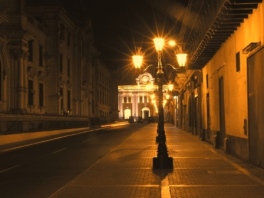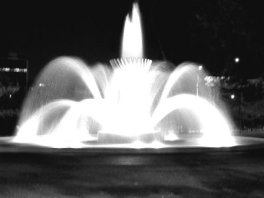There is much debate these days about the role of science and faith, (two diametrically opposed worldviews), in the nature of our existence and purpose. And despite over four centuries of astronomy and numerous unmanned and manned explorations of the moon and surrounding planets, almost all of the debate focuses on the origin of life on earth and of the origin of earth itself. And it is not just ‘creationists’ and religious scholars, but also to some extent, scientists who are to blame. Why is that? We, in the twenty first century know that we are not alone, and never were. We have companions that are very close to us, which are in fact alien. They are alien worlds, millions of miles separate from earth, and world’s to themselves. It is such a simple question. And seemingly obvious. What are they for? Asked from a religious-historical standpoint, what purpose do the planets serve? “Purpose” is a question that would seemingly have ramifications religiously, just as the recent genome data sparks controversy and more questions for our existence and purpose. Are they for our entertainment? To invoke wonder? Or do they serve as some kind of example, perhaps to value our own world even more? Maybe we should ask simply because no one else is?
In one of my favorite films “The Great Race” Peter Faulk the wise fool, asks the “Professor” constantly for advice, I take artistic liberty in imagining him asking such a question now: “Hey, professor, uhh I know they orbit the sun, they have orbital periods, ya ya sure, but what are they FOR? The earth is for us, right?” Is the earth really only for us? Does not the evidence of our relatedness to the code shared by all life on the planet, say something of our collective purpose and even, stewardship? The anachronism serves to illustrate a general viewpoint of TV shows and classrooms. The question of what the planets are for, is equally troubling if asked from a religious or scientific perspective. It challenges the comfort gained by precise data, facts and figures, as these seem to only shroud the problem further, they do not answer why the giant planets are here. This is not a shortcoming of more persuasive oratorio or speech, but defines I believe, the real gap between where we are now and where we need to be. Learning of the climates and conditions of other planets may not only improve ones local understanding of their own planet, it may de-vilify the very technology and knowhow that is needed to address the problems.
In the days of Galileo, the mere knowledge that other moons circled Jupiter threatened the Vatican’s position that the earth was the center of the universe..The geocentric view in which all objects the ‘stars’ the moon, the sun, were placed in spheres, orbiting the earth. It marked the great rift between science and religion based worldviews. But how far have we really come from that time? Some leading scientists attempting to meld science with religion, such as Dr. Francis Collins, the former head of the Genome project speculate broadly on the nature of creation and of the modern synthesis theory, that is modern science’s account of life’s origins. They discuss the big bang and the possible role of God in the Big Bang, but also in the possible directing of “God’s instruction manual” as he refers to the genome. In such a view, the earth is the sole focus of our origin, just as it is in the Bible (see Collins’ book, “The Language of God” 2006). Another leading scientist, for example, the paleontologist Andrew Parker, has recently come out with a book (“The Genesis Enigma..”) touting the hypothesis that Genesis is in fact very consistent with scientific theory of the Big Bang and origin of earth and life on our planet. What is interesting though is that Genesis only mentions the earth and “the heavens”, it never mentions the other planets. They are not important? How so? How do you misplace an object that is 317 earths? (see Jupiter’s mass http://nssdc.gsfc.nasa.gov/planetary/factsheet/jupiterfact.html) Or Saturn, which is 95 times the mass of earth. Both planets orbit the sun just as earth does, though they take considerably longer, about 13 earth years for Jupiter for example. The focus we are to understand, is to again backwards accommodate ancient texts with science, even modern science. It appears that even today, four hundred years since the discovery of the moons of Jupter by Galileo, science confronts the modern equivalent of geocentrism with such eye opening wonders as close planetary flyby’s and comet landings, as real as gravity. And these are largely ignored. It is interesting that now, just like in the days of Vatican Inquisition, when Jesuits weighed the biblical implications of “infinitesimals” and forbid their teaching, science is still encountering issues of compatibility. Is it really incompatibility? Is science not, at its most serene, not simply exploring what is already there? It seems time for some of these scientists to open their eyes, and see for themselves, the light of saturn reflecting off its rings, not as some “sign” of philosophical alarm, or harm to their own personal beliefs, but of simple wonder of our existence shared by all peoples. If we again return to Collins’ thoughtful reasoning for how science or Design, might explain or might not explain our origins based on how DNA of our genes is constructed, but also the big bang model, can we also consider the issue of the missing planets from the book of Genesis and their purpose or purposelessness in Collins’ literal view of Creation? Collins asks frequently such questions as, “why would God put ‘junk’ DNA in our genome, what purpose would this serve?” Yet, Collins and intelligent designers would likely never ask “why would God put large gaseous planets in our solar system? Such unquestioning puts earth as a central focal point of the discussions about what should be the greater solar system and denies the obvious and very large bodies orbiting across our skies at night, which might ask if they could: “why were we not included in your book?” The scientists who look for scientific truth to support their beliefs seem to want to focus only here, only on earth. How are they any different from Jesuit mathematicians or astronomers who refused to consider the moon’s of Jupiter four hundred years ago? Why would God create other planets which serve no purpose to earth? I have heard plenty of the science-religion melding or accommodating arguments from some scientists, for how God might have steered evolution, or God might have balanced physics in such a way that the Universe is more favorable to intelligent beings as ourselves, moving this constant or that constant ever so slightly, and this is the anthropocentric view. But we are talking about giant planets, Jupiter and Saturn, and Uranus and Neptune. Why would God miscalculate and create at least eight other planets which serve no purpose? The sweeping masses that can be seen moving silently through our night sky, in their orbits of our sun, should be worth their weight in evidence against what is essentially a modernistic, geocentric view of the universe. A scientific combatabilism that serves only itself, has no legitimate claim to science, and is irrelevant to belief, except as I’ve said by deliberately fomenting its apparent incompatibility with religion (the fault of some scientists who make it so). If such accommodationist views still are considered relevant, it is extremely myopic, and scientifically and culturally narrow minded, of our species, to neglect the purpose of entire worlds, some of which might harbor life in their orbiting moons (consider Europa for example).
There is much energy invested in the search for other life in the solar system, and for earth like planets. The mathematics- the odds, favor finding an earthlike world. It seems odd to concentrate so heavily on the search for extraterrestrial life outside the solar system, when we in fact have extraterrestrial systems, nearby. The creation of these worlds, and of our solar system..are unknown histories that really should be a pressing question for our species. Because wherever they came from, their source must be magnificent and beyond scales of comprehension. Could such a source be reachable? Could it be visible to us if we decided to build an instrument to scan for it? Consider that even now, the mysteries of the universe are deepening. It is possible that 75% of the matter, meaning what is out there in the heavens, is dark or invisible, OR that some other force is working upon it besides gravity.
As of the date that I first drafted this article, a new and significant discovery has been made about the “outer” solar system. Amateur astronomer’s discovered a previously unknown planet, VP113 or unofficially “Biden’s” planet. It is a frozen, pinkish world covered in ice. But this finding suggests that there may be other planets orbiting well past Pluto, even other giant planets which might explain why smaller objects like Biden’s planet have irregular orbits. It extends the limits on the size of our solar system and if there are so many potential undiscovered planets orbiting, what else might be there?
We have opened the discussion to some extent to the purpose of the planets, at least as a more open question that is or should be of equal relevance as the ‘purpose’ of our genetic relatedness. At the same, however, the true nature of the other planet’s existence should invoke wonder of a deeper kind, that is not limited merely to our own world. I believe the other planets ask us to question even beyond what we currently know or are prepared to ask, perhaps limited to ask, currently about biological science and where we originated. The issues of our origins are most assuredly related to the birth of the other planets around us, and their history, a history that is virtually unknown to us. One might say “these are merely interpretations, different views of the same evidence before us.” But is it really such a subjective ‘interpretation’ if we as a species are falling short in our technology that ensures our survival? Perhaps the cutting of funds for basic technological research is not so “subjective” but has real impacts on our race to the next frontier. Given the consequences of not being prepared for a wayward asteroid, I don’t believe we could really have “too much technology” to deal with such a challenge, the real concern would be to not have enough.
Civilizations five hundred years ago could not fathom jet airplanes or supersonic trains because the fastest transportation system was still the horse. It was not because of a lack of brain power. It was simply a lack of knowledge of what was possible. Could we be in similar circumstances? Believing that we cannot even approach light speed travel, because the ____ engine has not been discovered? Ancient mariners did not look at the sea as being a gateway to other rich continents, because they didn’t know these even existed. The average citizen in 17th century London, had no idea he could make a fortune in gold in a place now known as “California.” The New World was not only a waste of time, it was a place to die, and very quickly.
To date, we have spent a great deal on the discussion of earth-creation here on earth. But in doing so, we neglect our neighboring planets. We neglect our place essentially in the system we live in. The nature of our existence is a mystery that extends to places far beyond earth itself, and is tied with the other planets around us, these are fields of astrophysics and astrobiology. Like civilizations before us, we need to educate ourselves on these other worlds, the secrets they harbor, and just like ancient mariners, learn about new ways of navigating across them.
1. Saturn (NASA/Flickr http://www.flickr.com/photos/ugordan/719346540
2. Francis Collins (2006) “The Language of God.”
3. New planet, Eris is heavier than Pluto by 27%http://www.nature.com/news/2007/070611/full/news070611-10.html
4. New planet VP113 discovered outside solar system. http://rt.com/news/dwarf-planet-biden-unlikely-region-505/ and Trujillo, C. A. & Sheppard, S. S. Nature 507, 471–474 (2014).
5. http://www.nature.com/news/private-asteroid-hunt-lacks-cash-to-spy-threats-in-orbit-1.17810
6. Amir Alexander (2014) “Infinitesimal: How a Dangerous Mathematical Theory Shaped the Modern World”.http://www.barnesandnoble.com/w/infinitesimal-amir-alexander/1115382359?ean=9781429953924





You must be logged in to post a comment.